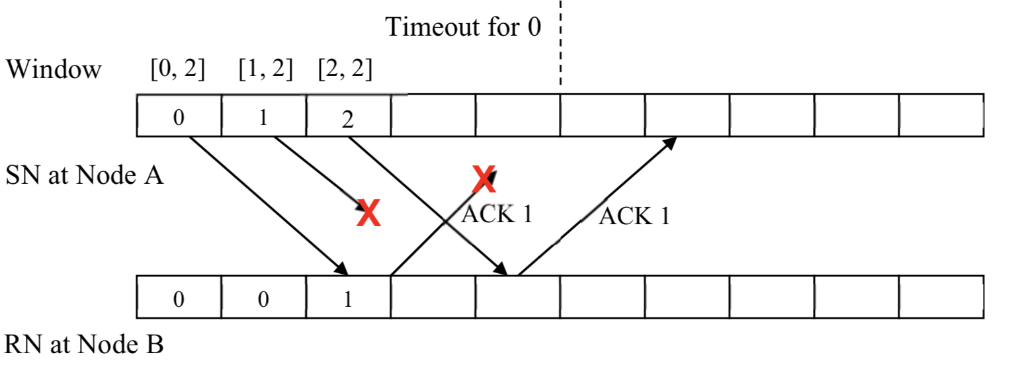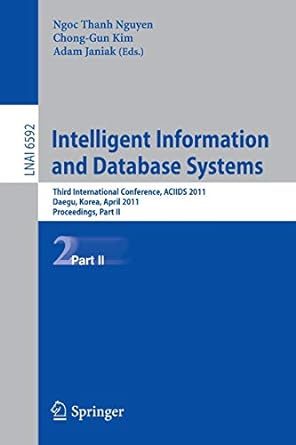Question
Go-Back-N protocol Consider the use of the go-back-n protocol where n=3 for error control for communication from A to B. A packet from A to
-
Go-Back-N protocol Consider the use of the go-back-n protocol where n=3 for error control for communication from A to B. A packet from A to B, and an ACK from B to A are received in error.
(a) (12 pt) Please complete the following diagram. Clearly indicate the sequence number (SN) for packets from A to B, the Response ACK number (RN) for packets from B to A, the time steps and SN of the accepted packets at B, and the windows kept at A in the following figure. (The windows specify the range of sequence # of packets that the sender is allowed to send, e.g., [0, 2] means the sender can send from packet #0 to #2.)

-
(b) (4 pt.) Suppose packets are transmitted in error from A to B with a probability of 0.01. Estimate the throughput of this go-back-3 protocol, assuming that the round trip delay is small compared to the transmission delay.
Hint: let a = propagation time/transmission time. When a
E [# of transmission to send one packet successfully across]
-
(c) (4 pt.) What would happen if the one-way propagation delay is 10 times the packet transmission time? In this case, how should the protocol be modified for better performance?
-
(d) (4 pt.) Consider a sliding window flow control (with no error control) with a window size of 4. What is the throughput of the system if the one-way propagation delay is 10 times the packet transmission time?
Step by Step Solution
There are 3 Steps involved in it
Step: 1

Get Instant Access to Expert-Tailored Solutions
See step-by-step solutions with expert insights and AI powered tools for academic success
Step: 2

Step: 3

Ace Your Homework with AI
Get the answers you need in no time with our AI-driven, step-by-step assistance
Get Started


